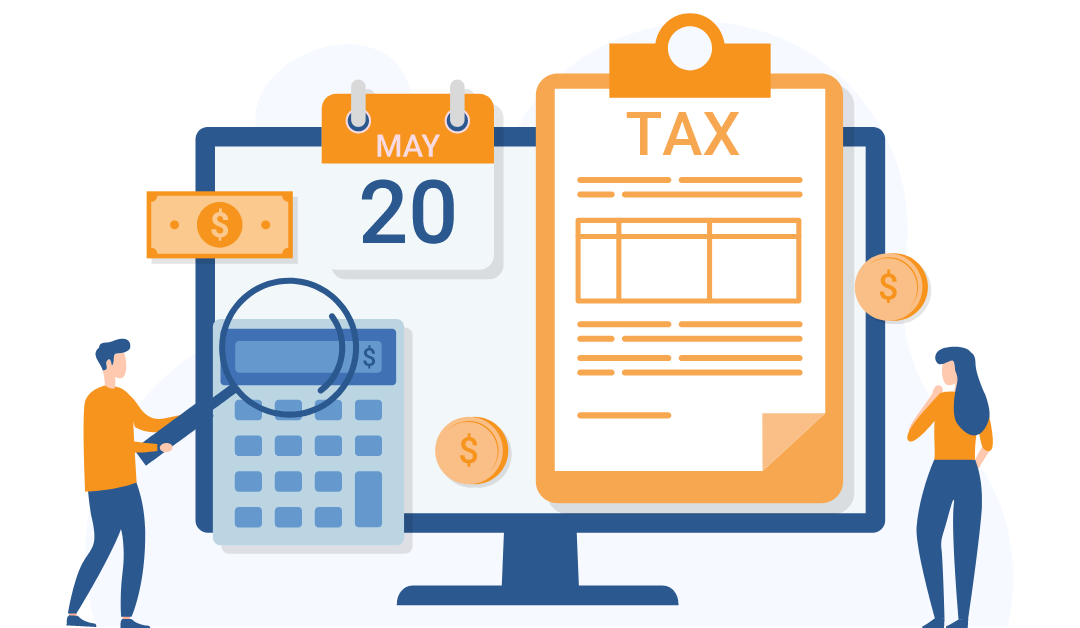Singapore Personal Income Tax Guide for Residents & Non-Residents

1 min Read
One of the perks of working and living in Singapore is that you can enjoy a low personal income tax rate. The country’s individual income tax rates are one of the lowest in the world, ranging from 0% to 22%.
This article provides an overview of the personal income tax guide for residents and non-residents of Singapore. Find out how the individual income tax applies to you!
Key Facts
Before we get into the detail, here are some essential facts you should know about the individual income tax in Singapore:
- Singapore adopts a progressive personal income tax regime from 0 to 22% above S$320,000.
- There are no capital gains or inheritance taxes.
- Individuals are only taxed on income earned in Singapore. In other words, income earned while working abroad is not taxable except for some special cases.
- Tax rules differ based on the individual’s tax domicile.
- The tax reporting due date for individuals is April 15 each year.
- Income tax is assessed based on a preceding year basis.
Personal income tax rates for residents
The person’s tax domicile status determines Singapore’s individual income tax rate. For example, you will be recognized as a taxpayer in Singapore if you are:
- Singapore Citizen (SC) or Singapore Permanent Resident (SPR) residing in Singapore except for temporary absence; or
- Foreigners who have lived/worked in Singapore (excluding directors of a company) for 183 days or more in the year prior to the year of assessment (YA).
Individuals residing in Singapore are taxed at the progressive resident tax rates as listed below.
| Chargeable Income | Income Tax Rate (%) | Gross Tax Payable ($) |
|
First $20,000 Next $10,000 |
0 2 |
0 200 |
|
First $30,000 Next $10,000 |
– 3.50 |
200 350 |
|
First $40,000 Next $40,000 |
– 7 |
550 2,800 |
|
First $80,000 Next $40,000 |
– 11.5 |
3,350 4,600 |
|
First $120,000 Next $40,000 |
– 15 |
7,950 6,000 |
|
First $160,000 Next $40,000 |
– 18 |
13,950 7,200 |
|
First $200,000 Next $40,000 |
– 19 |
21,150 7,600 |
|
First $240,000 Next $40,000 |
– 19.5 |
28,750 7,800 |
|
First $280,000 Next $40,000 |
– 20 |
36,550 8,000 |
|
First $320,000 In excess of $320,000 |
– 22 |
44,550 |
Notes:
- Filing a personal tax return is mandatory if your annual income is S$22,000 or more.
- You do not need to pay taxes if your annual income is less than S$22,000.
- However, you may still need to file a tax return if IRAS has notified you to submit it.
Personal income tax rate for non-residents
Non-tax residents in Singapore are also taxed. Taxes for non-tax residents apply to:
Employment Income
A flat tax rate of 15% or progressive resident tax rates apply to non-resident employment income (see the table above), whichever is the higher tax amount.
Director’s fee, consultation fees, and all other income sources
For non-residents, a tax rate of 22% is imposed on earned income and expenses. This ensures that a balance is maintained between the non-resident tax rate and the resident’s top marginal tax rate. See the table below for details:
| Type of Income | Non-resident individual tax rate |
| Director’s salary | 22% |
| Income derived from activities as non-resident professionals (consultants, trainers, etc.) | 15% of gross income or 22% of net income |
| Income derived from activities as non-resident public entertainers (artists, musicians, sportsmen, etc.) | 10% concession rate |
| Other income, e.g., rental income earned from Singapore properties | 22% |
| Supplementary Retirement Scheme (SRS) withdrawal by a non-citizen SRS member | 22% |
| Interest, royalty, etc. |
The reduction in the final withholding tax rate (subject to regulations) is as follows: Interest: 15% Royalty: 10% or 22% if the final withholding tax rate reduction does not apply. |
| Pension | 22% |
Filing personal income tax returns
You are required to file tax returns if you are an eligible taxpayer. When filing, you must complete and submit all forms to IRAS by 15 April.
Although you don’t have to pay taxes if your annual income is less than S$22,000, you may still need to file returns if you get a letter, form, or an SMS from the IRAS. Even if you had no income in previous years, you must still declare zero income on your tax form and submit it before April 15 (for paper filing) or April 18 (for e-filing).
After filing your returns, you will receive a Notice of Assessment (NOA) or a tax bill from May to September. The tax bill will show you the amount of tax you have to pay. If you do not agree with your tax amount, you must notify IRAS within 30 days from the date of your tax bill and state the reasons for your objection.
Furthermore, you must pay the full amount of tax within 30 days of receiving your NOA, regardless of whether you have notified IRAS of your objection. If your taxes are still due after 30 days, a penalty will be imposed.
If you are confused or need assistance with your personal taxes, please contact our experts for comprehensive guidance.
You may also want to read this related article:
Singapore Withholding Tax Guide
Personal Income Reliefs
Your income tax payable can be much lower if you take advantage of the Singapore government’s various schemes. Below are the qualifying conditions and the amount of tax relief provided for some of the schemes.
Earned Income Relief
This is a personal tax relief meant for profitably employed individuals or those who carry on a trade, business, profession, or vocation.
The amount of the relief (shown in the table below) is based on your age and taxable income in the previous year.
|
Your age as of Dec 31 of the previous year |
*Maximum claimable amount |
| Below 55 | $1,000 |
| 55 to 59 | $6,000 |
| 60 and above | $8,000 |
As for disabled persons, the amount of relief is higher, as shown below.
|
Your age as of Dec 31 of the previous year |
*Maximum claimable amount |
| Below 55 | $4,000 |
| 55 to 59 | $10,000 |
| 60 and above | $12,000 |
*If the amount of taxable income is lower than the maximum amount that can be claimed, the relief will be limited to the amount of taxable income.
Refer to this page for additional information.
Life Insurance Relief
To claim this relief for the YA 2021, you must meet all these requirements:
- Your total mandatory employee CPF contributions, self-employed Medisave/CPF contributions, and voluntary cash contributions to your Medisave account in 2020 are less than $5,000;
- You paid insurance premiums in 2020 on your own life insurance policy; and
- The insurance company must have an office or branch in Singapore if you took your policy on or after 10 August 1973.
If you satisfy the above conditions, you may claim
- the difference between $5,000 and your CPF contribution; or
- up to 7% of the insured value of your own/your wife’s life, or the amount of insurance premiums paid.
To apply for this relief, click here.
SRS Tax Relief
You can claim the SRS tax relief in the YA following the year of contribution if you are a taxpayer for that YA. However, you cannot apply for it if:
- Your SRS account is suspended on December 31 of the year of contribution; or
- The contribution amount is withdrawn from your SRS in the same year of contribution.
The relief amount is the actual amount of SRS contribution that you and/or your employer (on your behalf) have made in the preceding year.
For further information, click here.
Foreign Domestic Worker Levy (FDWL) Relief
This relief is given to encourage married women to keep working. To claim this relief, you must satisfy all the following conditions:
1. You or your husband hired a foreign domestic employee in 2020.
2. In 2020, you were:
- married and lived with your husband; or
- married and your husband was not a taxpayer in Singapore; or
- separated from your husband, divorced or widowed, and have children living with you and to whom you can claim child waivers.
You can only use FDWL to offset the income you earn. Earned income refers to income derived from employment, retirement, trade, business, profession, or vocation, less allowable expenses.
The amount of relief for YA 2021 is as follows:
| YA 2021 | Normal | Concessionary# |
| No. of months levy paid in 2020 | 12 | 12 |
| Total levy paid in 2020 |
$3,600 (*$300 x 12 months) or $5,400 (*$450 x 12 months) |
$720 ($60 x 12 months) |
| Maximum FDWL relief for YA 2021 |
$7,200 (2 x $3,600) or $10,800 (2 x $5,400) |
$1,440 (2 x $720) |
*The levy rate for the first foreign domestic worker (FDW) employed, not on concessions, is $300 per month. For the next FDW employed, not in the concession, the levy rate is $450 per month.
For more information about personal income reliefs and rebates, click here.

Subscribe to Our Newsletter
Stay up-to-date with our useful guides on company incorporation, accounting & taxation and business management!

Subscribe to Our Newsletter
Stay up-to-date with our useful guides on company incorporation, accounting & taxation and business management!
Need advice on the best structure
for your business
Biz Atom helps entrepreneurs and international business make the right choice when setting up in Singapore.